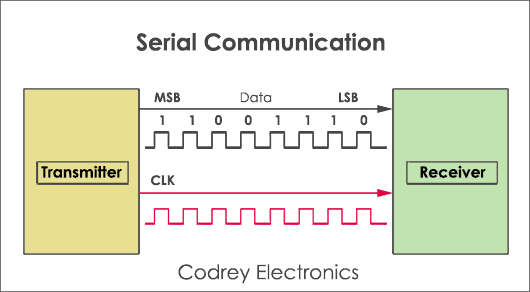Serial Baud Rate Rs232
WebWork tracker is suitable for teams of any type and size.#1 Time Tracker with Screenshots: Track Time, View Screenshots, Timesheet Reports, Mouse and Keyboard clicks and generate invoices. Elorus is an online invoicing, time-tracking and billing software. Employee time reporting. Essentially, it is destined for freelancers, small businesses and creative agencies. Since 2014, Elorus attends to the rising market demands posing as a time-saver and a sleepless ally.Our interactive dashboard informs you about your business stats regarding your tracked hours, payments and bills' status as well as your net cash flow and balance.So if all the above apply to your business, we created Elorus just for you.Elorus is the time-tracking & invoicing solution for professionals & agencies.
i have built a TTL/RS232 converter to send strings via RS232 using an Arduino nano, following the tutorial:Arduino-RS232. My problem concerns the transmission baud rate, because in the tutorial it is suggested a short script which manually generates the code which will become the RS232 signal. In this script some constant delays are used, i.e. 'bit9600Delay 100 ' and so on. These delays are set for a baud rate of 9600, but i need to double it to have a baud of 19200. Is it enough to divide by two those constant values or should i use a different method? Thank you very much


Baud rate is the rate at which highs and lows must be sampled to decode the signal. The signal includes: protocol overhead (e.g. Start bits, stop bits, and parity bits) and; actual application specific data. Aug 06, 2019 The RS-232 protocol controls the baud rate. Baud rates usually fall into the range of 1200 to 19200. Starting at 1200, rates double through the common baud rates of 1200, 2400, 4800, 9600 and 19200. Sets the data rate in bits per second (baud) for serial data transmission. For communicating with the computer, use one of these rates: 300, 600, 1200, 2400, 4800, 9600, 14400, 19200, 28800, 38400, 57600, or 115200. You can, however, specify other rates - for example, to communicate over pins 0 and 1 with a component.
migrated from electronics.stackexchange.comDec 29 '16 at 0:36
This question came from our site for electronics and electrical engineering professionals, students, and enthusiasts.
2 Answers
It is never good to base code on delays instead of intervals. This is especially true for faster intervals where the execution of the code its self consume a significant portion of the interval. Also note, some protocols only occasionally resynchronize. RS232 resynchronizes after each byte (about 8 bits of data). So any accumulated delay errors may impact the integrity of the bits furthest from the resynchronization event.
Instead of delays use the Arduino's built in hardware to send and receive RS232 communications. The hardware is designed to work independently of code execution and will out perform software implementations especially for the faster baud rates.
st2000st2000Serial Baud Rates List
This Arduino sketch is a wonderful opportunity for you to learn the very basics of serial communication.
You should be very careful scaling the constants given in any baud rate program (whether using a hardware or software UART) as they are normally off by some small percentage, and without understanding the implications you may eventually introduce timing errors.There is a great description of the timing sensitivities in this Picaxe note.
The table below shows the actual bit times for various baud rates:
Notice here that for 9600 baud the sketch uses a constant which will use a 100 uS delay function for the bit times. From the table above you can see that this is slightly inaccurate, and the more correct delay would be 104 uS. This is an error of about 4%.
Would this error prevent successful reception of characters in the sketch? Single characters with inter character spaces more than 1 character time, no ..but if you sent a string of characters end to end with no gaps this sketch would fail on receive.
Typical Baud Rate
Scaling the constant for 19200 baud --> 100/2 gives 50 but the bit time for 19200 is actually 52 uS, so again an error, this time of about 1%.If we scaled the constant (100) for 115200 --> 100/12 gives 8.3 uS while 104/12 gives 8.7 uS for an error 4.5% or close to 0%.
There is IMO an error in this sketch for the serial receive routine, since it's hard wired to expect 2 stop bits. Any concatenated characters separated by only one stop bit will fail (you miss the second character start bit).